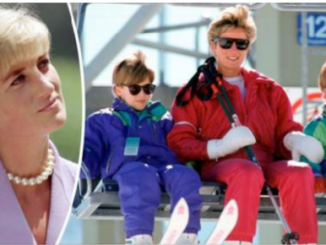
In the heart of Lower Manhattan, an unusual 29-story skyscraper, devoid of windows, stands tall and mysterious. Its code name is Titanpointe, and it is located at 33 Thomas Street. This building has baffled New Yorkers for years.
The building, constructed in 1974, was designed to withstand atomic blasts and was initially intended to house vital telecommunications equipment. It was envisioned as a communication nerve center, fortified against nuclear threats, by the architectural firm John Carl Warnecke & Associates.
This imposing structure, a gray tower of concrete and granite soaring 550 feet into the New York skyline, remains, unlike any other building in its vicinity. Unlike neighboring residential and office buildings, it does not have a single window and remains unilluminated. At night, it takes on an eerie presence, and by day it casts a giant shadow, its square vents emitting a faint hum, often drowned out by the city’s bustling sounds.
For decades, 33 Thomas Street, also nicknamed the “Long Lines Building,” has captured the imagination of New Yorkers as one of the city’s weirdest and most iconic skyscrapers. But the true purpose of this enigmatic structure has remained largely concealed, shrouded in secrecy.
The Secret Behind 33 Thomas Street
Beyond its enigmatic exterior, 33 Thomas Street conceals a deeper secret. This building appears to be more than just a telecommunications hub. Evidence from documents obtained by NSA whistleblower Edward Snowden, along with architectural plans and interviews with former AT&T employees, suggests that 33 Thomas Street served as an NSA surveillance site, code-named Titanpointe.
The NSA’s involvement goes beyond mere speculation. Inside the building, there’s a major international gateway switch that routes phone calls between the U.S. and countries worldwide. The NSA is believed to have tapped into these calls from a secure facility within the AT&T building. This covert surveillance program has targeted not only international organizations like the United Nations, the International Monetary Fund, and the World Bank but also numerous countries, including U.S. allies.
While AT&T has cooperated with the NSA on surveillance, few details have emerged about the specific role of facilities like 33 Thomas Street in carrying out top-secret programs. The Snowden documents, however, provide unprecedented insight into how NSA equipment has been integrated into AT&T’s network in New York City. This integration reveals the methods and technology employed by the agency to gather communications data from the company’s systems.
The NSA’s presence within this iconic skyscraper raises questions about the boundaries of surveillance in the modern world. As Elizabeth Goitein, co-director of the liberty and national security program at the Brennan Center for Justice, points out, “This is yet more proof that our communications service providers have become, whether willingly or unwillingly, an arm of the surveillance state.” The deep integration of the NSA within domestic communications infrastructure challenges the notion that such surveillance can be neatly confined to non-American targets.
You should know what blue line painted on the street means

Every motorist understands the paramount importance of adhering to road markings, as neglecting them can pose a grave risk, potentially leading to tragic consequences.
In specific regions of the United States, residents may soon notice the emergence of a novel road marking: a slender blue line positioned between the customary yellow center lines. This unique blue line is making its debut on Maryland’s roadways as a gesture of tribute to the valiant police officers devoted to safeguarding their communities.

Beyond its symbolic significance, the blue line also serves a practical purpose, acting as a navigational guide to the local police station. This symbolic gesture seeks to acknowledge and honor the sacrifices made by police officers who courageously put their lives on the line each day in the line of duty.
Recently, Ocean City, Maryland, embraced the incorporation of these blue lines onto its thoroughfares, eliciting satisfaction from Mayor Rick Sheehan. Mayor Sheehan keenly recognizes the indispensable role played by police officers in upholding peace in the beach community, where they skillfully balance the needs of older retirees and the exuberance of partying teenagers.
Strategically positioned between the established yellow road divider lines on Ocean City’s 65th street, the blue line provides a clear path leading directly to the Ocean City Police Department headquarters. This initiative is envisioned to set a positive precedent, inspiring other communities across the nation to contemplate integrating similar blue lines as a visible demonstration of solidarity and support for their local law enforcement agencies.



Leave a Reply